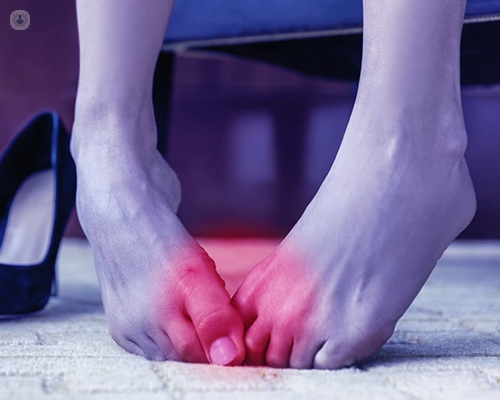What are bunions, and what do they look like?
Autore:Top Doctors recently spoke to Mr Harbhajan Plaha, a highly experienced consultant orthopaedic surgeon, to find out what bunions are, what symptoms patients with bunions typically experience, and how they are treated.

What are bunions, and what do they look like?
They are basically a deformity of the joint in one’s big toe. The big toe tends to move towards the outer side of the foot, so with bunions, a large bump will be present on the inner part of the foot.
As time goes by, patients often report their second toe getting pushed away by their big toe. Quite often, patients with bunions are uncomfortable when wearing shoes.
What symptoms are associated with bunions?
Patients with bunions will often say that the front of their foot has become quite wide. In patients with a bunion, the big toe will curl outwards and away from the rest of the toes on the foot. Patients can often also suffer from infection and inflammation of the big toe.
Do bunions get worse with age?
Yes. As time goes by, the toe deformity progresses and worsens.
What happens if bunions are left untreated?
If left untreated, they gradually progress over time, which will often result in severe inflammation and infection of the big toe.
How are bunions treated? Is surgery needed?
In the initial stages when the bunions are beginning to form, symptoms can quite often be effectively treated. A splint can be used to separate the big toe and the second toe, so the second toe isn’t affected as much. However, this is just a temporary measure.
This is a highly effective option for those who do not wish to undergo surgery or for those who are unfit for surgery. Having said that though, surgery is the most recommended treatment option.
What is involved in bunion surgery, and how long does it take to recover?
It is generally performed as a day-case procedure, and is done under a general anaesthetic. There are various procedures that can be performed. The basic procedure is aimed at realigning the toe. So, quite often, you need to divide the bone which is just before the big toe (the metatarsal).
Once the bone is realigned, it needs to be fixed through the use of a bandage, which will stay on for six weeks after surgery. Patients should stay at home and rest as much as possible, keeping their foot elevated wherever and whenever possible.
Mr Harbhajan Plaha is a highly accomplished Brentwood-based consultant orthopaedic surgeon who specialises in bunions and bunion surgery. Make a consultation with him today via his Top Doctors profile.


